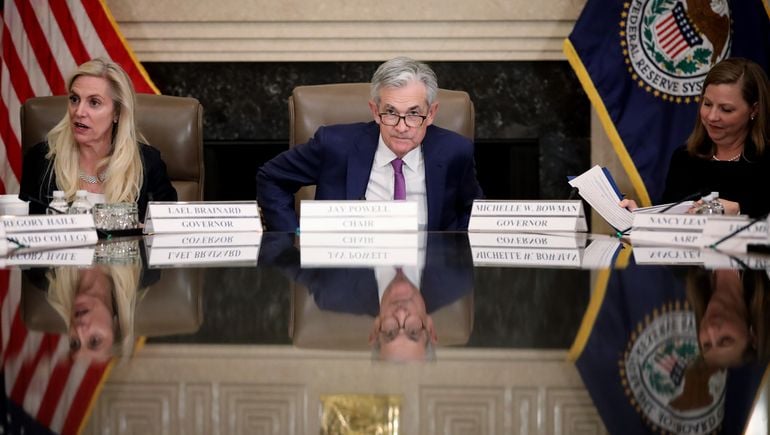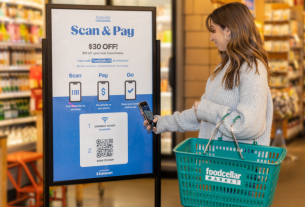Dive Brief:
- A surge in job openings last month underscores that the Federal Reserve will need to further raise interest rates and that curbing inflation will demand more time and cooling in the labor market than expected, Fed Chair Jerome Powell said Tuesday.
- “We have a significant road ahead to get inflation down to 2%,” Powell said, referring to the Fed’s inflation target. “There has been an expectation that it will go away quickly and painlessly, and I don’t think that’s at all a guarantee, that’s not the base case.”
- Price pressures, which hit a 40-year high in 2022, will probably significantly ease this year but not fall close to 2% until next year, Powell predicted during an interview sponsored by The Economic Club of Washington, D.C. “We’ll have to do more rate increases and then we’ll have to look around and see whether we’ve done enough.”
Dive Insight:
The Fed last week raised the federal funds rate by a quarter-percentage-point to a range of 4.5% to 4.75%, slowing monetary tightening amid signs of a cooling economy and declining inflation.
Two days later, however, the Labor Department reported that the U.S. added 517,000 jobs last month — more than twice the number forecast by economists — and unemployment fell to 3.4%, the lowest level since 1969.
“We didn’t expect it to be this strong,” Powell said, referring to job growth estimates by his fellow policymakers. “It kind of shows you why we think that this will be a process that takes a significant period of time because the labor market is extraordinarily strong.”
“I, too, was surprised by the big jobs number,” Minneapolis Fed President Neel Kashkari said Tuesday. “It tells me that, so far, we’re not seeing much of an imprint of our tightening to date on the labor market.”
The central bank pushed up the main interest rate by 0.5 percentage point in December and by 0.75 percentage point in each of its prior four meetings. Powell at a news conference last Wednesday said policymakers were considering “a couple of more rate hikes.” They are next scheduled to meet on March 21-22.
Referring to the Fed’s most aggressive withdrawal of stimulus in 40 years, Kashkari told CNBC, “there’s some evidence that it’s having some effect, but it’s pretty muted so far.” He said he expects the central bank will raise the main interest rate by the end of 2023 to 5.4%, his estimate in December.
Fed officials in December projected they would push up the benchmark interest rate to 5.1% by year end and that unemployment will rise to 4.6%.
Should the economy prove more robust than expected, “It’ll probably mean we have to do a little more work,” Atlanta Fed President Raphael Bostic told Bloomberg on Monday. “And I would expect that would translate into us raising interest rates more than I projected right now,” which is a high point of 5.1%.
Wage growth slowed last month — with average hourly earnings rising 4.4% over a 12-month period compared with 4.8% in December — even though the labor market is extremely tight, with 1.9 openings for every job seeker.
“Most economists would say that to get inflation down from high levels that we’ve had, if you look at history, there is some softening in labor market conditions that goes along with that,” Powell said Tuesday. “That is still, you know, very possible and indeed likely here — some softening in labor market conditions.
“However, this cycle is different from other cycles,” Powell said. “It’s just confounded all sorts of attempts to predict what it would do.”
Inflation in the services sector, excluding housing, poses the biggest current obstacle to sustained disinflation, Powell said, noting that it represents 56% of the overall core measure for price pressures tracked by the Fed.
“It’s the biggest part, obviously, and we’re not seeing disinflation there and that’s going to take some time,” he said. “We need to be patient and we think we’re going to need to keep rates at a restrictive level for, you know, for a period of time before that comes down.”
The central bank’s preferred inflation gauge — the core personal consumption expenditures price index excluding food and energy — fell to 4.4% in the year through December from an annual pace of 5.2% in September.
“The numerous references to excess labor demand and stubbornly high inflation in services excluding housing underscores that the [Federal Open Market Committee policymakers] still believe they have a way to go to get on top of inflation,” Fitch Ratings Chief Economist Brian Coulton said.
“Powell pushed back on the idea that reducing inflation will be painless, which is consistent with the Fed raising rates again and keeping rates in restrictive territory for quite a while,” Coulton said in an email.



